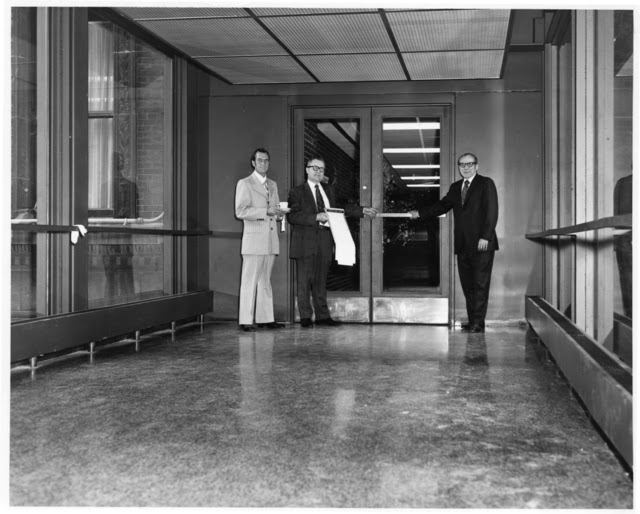The Historical Stories and Facts of the Pioneer Endicott Building
- The Pioneer Building held the World's First Telephone Answering Service, opening in October 1927.
- The Pioneer Building was home to the first Twin Cities Northwest Airlines ticket office.
- The renovations that took place from 1982-1983 cost $14.5 million, and was an 'around-the-clock' construction project that consisted of three work shifts per day. The total renovation took just 10 months and was the largest historic renovation at the time for tax credits.
- The Buildings had about 30 chimneys - they used to heat the buildings with coal. These got torn down in the 80s.
- At one point, the Pioneer Endicott Building was sold just for $10
- During the restoration in the 80s, a worker in the Pioneer Endicott Building entered John's office and told him that there was a jumper on the roof! John ran up to the roof to see if he could coax the man down, but he was nowhere to be seen. Then John noticed windows full of people pointing at him from the other buildings. They thought John was the jumper! Turns out it had simply been a plumber taking a smoke break and he had just left the roof when John arrived.
- Watson Davidson, the previous owner of the Pioneer Endicott Buildings in the early-to-mid 1900s, built the first skyway in St. Paul in 1967. It connected the Federal Courts Building to the Pioneer Press Building. This skyway is the only one with tinted glass; it was no longer allowed after they built the first one.

Skyway connecting First Bank Building to Pioneer Press Building, 1971. Second skyway put in.
Source
- The corners of the Pioneer Building were made of thick masonry, to keep the building from racketing. This was the tallest building west of Chicago, and there was concern that Mother Earth would crumble beneath this massive structure.
- Inside, the corners were used as safes for various tenants. During John's run as manager, he knew the codes to every safe in the building, and had to open them for forgetful tenants on a regular basis. These safes are now closets.
- There are still horse stalls in the basement of the Pioneer building that were used for the horses and carriages that would deliver the Pioneer Press throughout the city.

Old horse stall in the Pioneer Building
- When the First National Bank bought the Pioneer Endicott Buildings, they requested that John remove and throw out many of the old doors. John was hesitant, but had no other option for storing them. Luckily, while John was putting them in a dumpster, an artist came up and asked if he could use them. John was relieved and told him yes of course. Six months later, John was at an art show and he found all of the doors in different art shapes, repurposed and beautiful. He bought one that day. Later, one of these doors hung at the Walker Art Center. The artist, Steven Woodward, is an internationally known sculptor.
The Glass Elevator(s)
 |
| Elevator and spiral staircase in the Pioneer Building. 1917. Source. |
- There were originally four open-cage, hydraulic passenger elevators that were part of the light court, or atrium.
- The Pioneer Building is believed to have had the first glass elevator in the United States.
- The elevators had a top speed of 600 feet per minute, quite fast for that time.
- You needed to have an operating license from the state to run the elevator.
- The elevator operator had a very small apartment at the top of the building.
- John Manillo is a licensed elevator operator.
- The beautiful stained glass ceiling in the Endicott Building once had thick glass above it that allowed lights to shine through, creating a gorgeous glow and light to the hallway.
- Unfortunately, people used to throw things out of their windows, which would come crashing through the glass ceiling, and into the Endicott Building. John has seen photos of buckets lining the hallway as water dripped through while it rained.
- Eventually, they put a roof over the glass and suspended the ceiling and put lights above it.
- Thankfully, John Mannillo's electrician came to him one day and said he heard that the ceilings used to contain stained glass. John told him to 'crawl up there' to see if he could find it. They both managed to crawl up to the space and removed some of the insolation. They found the original ceiling but it was painted white.
- John hired workers to strip the ceiling, and built a track for a dolly to lay on to roll up and down the sides. He then hired a stained glass artist from Monarch Studios in Lowertown to restore the original ceiling. And that's how we have the beautiful ceiling, the original ceiling, in the building today!
 |
| Photos courtesy Minnesota History Center and Flickr |


No comments:
Post a Comment